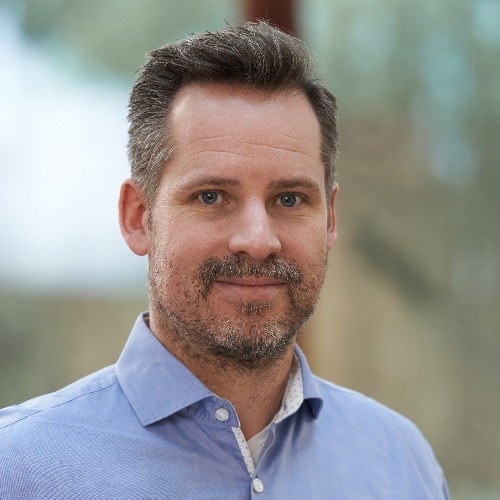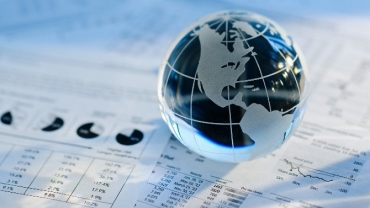
Your expert for questions

Gunther Dütsch
Partner, Sustainability Services & Climate Change, PwC Germany
Email
PwC tool assists you on your path to net zero
The Paris Agreement states that global warming should be limited to well-below two degrees Celsius. Efforts should also be made to limit warming to the more stringent target of 1.5 degrees. However, this objective can only be achieved by immediately and comprehensively decarbonizing the economy. In addition to nation states, companies around the world are now being called upon to drive the required transformation forward. The financial markets are also playing a vital role here because investors, banks, insurance undertakings and pension providers are increasingly considering corporate mitigation measures and transition planning in their decisions on capital allocation.
Still, in many companies uncertainties persist with regard to the transition pathways of their operating sectors. Major, often unanswered questions are: (How) can companies reduce greenhouse gas emissions in line with their sectoral decarbonization requirements? How economical will the necessary measures be? What is the most cost-efficient abatement plan? This makes it challenging to develop business transformation plans for achieving a climate-neutral Germany by 2045.
A tool from PwC Germany assists companies in drawing up their transformation plans for climate neutrality by 2050 – from renewable energy to specific key technologies for reducing greenhouse gas emissions across various industries. Financial sector specialists and industry experts can also use the tool to analyze transformation pathways and requirements together with their financial implications.
The tool makes it possible to examine the costs and effects of major reduction measures and to compare the resulting emissions pathway against the target pathway of the respective sector.
Users thus obtain an indicative roadmap that meets the minimum requirements of the Paris climate objectives and clearly presents cost implications and needs for investment. The web-based tool is free-of-charge and does not store any data.
Overview of advantages
Transformation requires clear pathways forward
A reliable tool based on practice
The transformation tool has been developed by climate and industry experts at PwC Germany and WWF Germany as part of the “Pathways to Paris” project. It is available for ten sectors within the German economy.
The assumptions and requirements underlying the tool were validated in a series of 30 workshops with over 80 actors from the real economy, the financial sector and academia.
The sector-specific transition pathways of the scenario “Towards a Climate-Neutral Germany by 2045” serve as the basis for the tool. This scenario was developed by Prognos, the Oeko-Institut and the Wuppertal Institute (2021) on behalf of the Climate Neutrality Foundation, Agora Energiewende and Agora Verkehrswende. It describes the sector-specific transformations that are necessary to achieve the objective of a climate-neutral Germany by 2045 while adhering to the minimum requirements of the Paris Climate Agreement.
In order to achieve climate neutrality by 2045, companies need a clear pathway to transformation and investors require reliable methods for assessing the progress of the transformation process. Our tool addresses this pressing market demand.
Try out the tool now
Your transformation pathway to climate neutrality starts here
Ten sectors – ten target pathways towards net zero
- Road freight
- Residential real estate
- Commercial real estate
- Electricity generation
- Steel production
- Cement production
- Livestock farming – dairy sector
- High Value Chemicals
- Ammonia production
- Automotive industry
Road freight
Key technologies for emission reduction
- Battery-electric drive
- Hydrogen drive
- Catenary trucks
Main drivers of investment
- New drive technologies
Residential real estate
Key technologies for reducing emissions
Heat pumps
Regeneratively produced district heating
Renovation and modernization
Main drivers of investment
Investment costs for heat pumps
Investment costs for district heating
Commercial real estate
Key technologies for reducing emissions
Heat pumps
Regeneratively produced district heating
Renovation and modernization
Main drivers of investment
Investment costs for heat pumps
Investment costs for district heating
Electricity generation
Key technologies for reducing emissions
- Onshore wind energy
- Offshore wind energy
- Photovoltaics
Main drivers of investment
- Expansion of regenerative energy capacities
Steel production
Key technologies for reducing emissions
- Direct reduction using green hydrogen
- Electric arc production route
Main drivers of investment
- Investment in new production routes
Cement production
Key technologies for reducing emissions
CCS (carbon capture & storage)
Use of alternative binders
Regenerative heat sources
Main drivers of investment
CO2 capture and infrastructure
Conversion of furnaces into alternative heat sources
Livestock farming – dairy sector
Key technologies for reducing emissions
Regional, nitrogen-optimized feed
Pasture grazing
Using slurry for energy
Covering of manure storage facilities
Main drivers of investment
Conversion of husbandry systems
Conversion of slurry management systems
Fodder changeover
High Value Chemicals
Key technologies for reducing emissions
Electrification or conversion of steam crackers to biogenic resources (e.g. synthetic naphtha)
Main drivers of investment
Conversion of steam crackers
Ammonia production
Key technologies for reducing emissions
Using biogenic resources (biogas/biodiesel) or switching to electrolysis for the production processes of steam reforming and partial oxidation
Main drivers of investment
Conversion of plants
Automotive industry
Key technologies for reducing emissions
Battery electric vehicles
Main drivers of investment
Alternative engine systems
Production changeover
With the Pathways to Paris transformation tool, companies from across ten sectors gain a practical instrument for charting out paths towards climate neutrality and for understanding the cost implications of climate action in detail.
Final overview
In order to drive climate action forward effectively and achieve the objective of climate neutrality by 2045, companies need two things: First, they need a reduction pathway that is compatible with the Paris Climate Agreement as well as cost-efficient measures for pursuing it.
At the same time, international investors need reliable methods for assessing companies based on their transformation performance. This is essential so that they can manage the immense investments required in a targeted manner.
With the Pathways to Paris transformation tool, PwC Germany and WWF Germany have cooperated to develop a web-based, free-of-charge tool that addresses this need and thus contributes towards climate neutrality in Germany.









